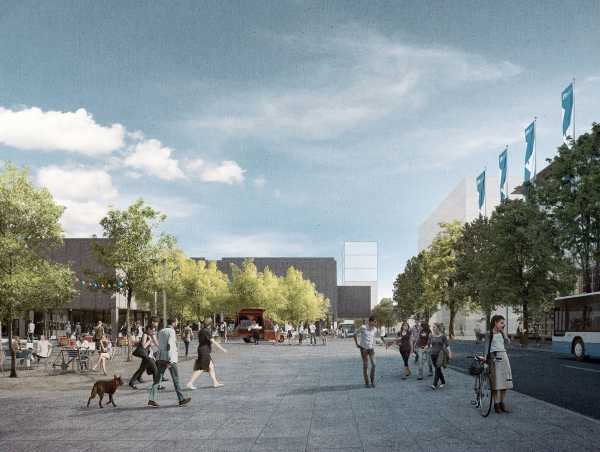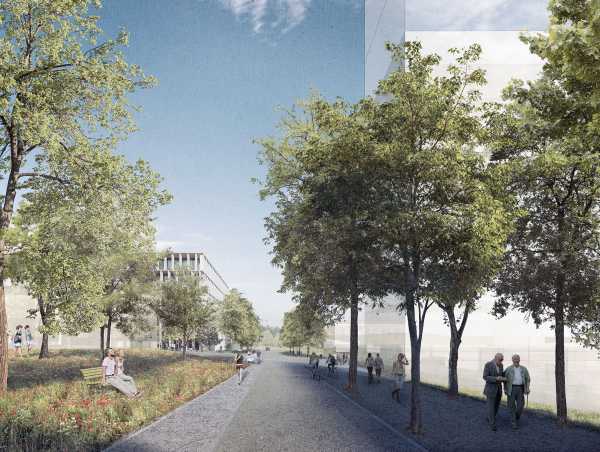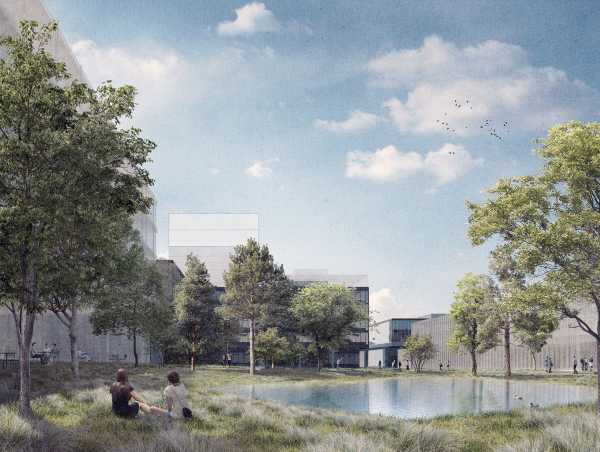ETH Zurich is planning a phased infill development of its Hönggerberg location. The vision is of an attractive campus with a city neighbourhood feel, combining teaching, research, and knowledge transfer with space to relax and socialise. The special building regulations are now open to the local public for feedback. The city of Zurich has thus fulfilled the legal and planning requirements for the further development of the campus.

Over the years since 1961, when ETH Zurich began construction of the first three buildings on the Hönggerberg site, the location has grown to become a diverse urban campus. Several new facilities for teaching, research, and knowledge transfer have been created in the past decade alone. These include a unique digital construction environment that allows research in the field of robotic fabrication in architecture; the Student Project House pilot project space, where students can test their first project ideas; and the Innovation & Entrepreneurship Lab, where young talents can develop their business ideas with entrepreneurial spirit. There are also leisure facilities, such as a sports centre, two student residences with hairdressing salons and bicycle shops, and new catering facilities.
“ETH Zurich is experiencing a period of growth”, says Ulrich Weidmann, Vice President Human Resources and Infrastructure. “The increase in the number of professorships and students is the result of the attractive and forward-looking topics that are the focus of teaching and research at ETH Zurich, generating knowledge that is shared with business and society.”
In the Zurich area, ETH Zurich is focusing its structural development activities on its two main sites, Zurich Zentrum and Hönggerberg. The historical nature of the neighbourhood and city structures restrict the scope of development opportunities for ETH Zurich around the Zentrum site. The university is therefore focusing on its Hönggerberg location for the majority of its future space requirements.
Campus Hönggerberg 2040 vision
By 2040, the Hönggerberg campus will be a place of study and research that combines a pleasant work environment with space to relax and socialise. The campus will be given an urban character through different structural heights and depths. The variety of building concepts also provides the flexibility to cater for as many future teaching and research needs as possible, without having to predefine these in detail from the outset. The central Wolfgang-Pauli-Strasse will be transformed into a boulevard with facilities open to the public on the ground floors, including cafés, shops, and exhibitions. Public gardens and open spaces will complete the campus, making it a welcoming location for ETH members, guests, and visitors alike.
This vision is based on the ETH Campus Hönggerberg 2040 master plan, drawn up by ETH Zurich and the canton and city of Zurich. The focus here is on infill development as opposed to outwards expansion. This means that the Hönggerberg campus will be structurally developed within the familiar ‘ring’ that already surrounds it today. ETH Zurich is not looking to directly connect the campus to the Höngg or Affoltern districts in a structural sense – the surrounding landscape and the local recreation area will be preserved as they are (see video).
Portal and historical buildings and gardens
“All the planned buildings are located along the central boulevard, which is an essential element to this infill development plan”, says Ulrich Weidmann. He explains: “This enables us to expand the campus’s existing green spaces and preserve the protected gardens and research buildings designed by renowned architect Albert Heinrich Steiner.” This means the open and green spaces will play an even greater role. The protected garden areas on the campus today – the Albert Steiner Garden and the Flora Ruchat-Roncati Garden – will be supplemented by an additional garden close to the student residences.
Four high-rose buildings are planned, two of which will be located in the middle of the campus. In the medium term, the plans include a 50- to 80-metres-tall building with seminar rooms and areas for public use alongside the piazza at the centre of the campus. In the longer term, a 30- to 50-metres-tall office building could replace the HPI building. Portal buildings with mixed research and public uses are planned for both campus entrances. The South Portal Building on the Höngg side could go up to between 30 and 50 metres in height. Its counterpart, the North Portal Building on the Affoltern side, could be from 50 to a maximum of 80 metres in height. A public terrace will also be built alongside the North Portal Building, comparable to the Polyterrasse in front of the ETH main building.
This development will take place in stages. This will allow ETH Zurich the flexibility to adjust the timing of its construction projects to meet actual requirements, should there be any changes in the space required for teaching, research, and knowledge transfer.
Planning and regulatory requirements
It is not possible to develop the ETH Zurich Hönggerberg Campus under currently applicable special building regulations. Construction projects already planned would hit the upper limit for buildings on Hönggerberg by 2025. Indeed, only the renovation and extension of the civil engineering department’s HIF laboratory and office building, and the new HPQ laboratory and office building for the physics department can still be implemented under the current special building regulations.
The Campus Hönggerberg 2040 master plan will be translated into updated special building regulations in order for ETH Zurich to develop its premises on the Hönggerberg site. With an adjustment of the cantonal structure plan and a partial revision of the city of Zurich’s building and zoning regulations (BZO), ETH Zurich will again have the scope required for this infill development. This is backed by the political support of the city and canton of Zurich.
The draft of external page the new special building regulations as well as external page the partial revision of the BZO will be available for public viewing for two months at Amtshaus IV from 2 June to 31 July 2018 and can be downloaded online. The planning tools will then be adjusted and forwarded to the Municipal Council of Zurich for consultation and a decision.
Dialogue with the local neighbourhoods
ETH Zurich and the city of Zurich are also holding public information events in collaboration with the neighbourhood associations of Höngg and Affoltern on 5 and 6 June. Here they will discuss and present the key aspects of the ongoing plans to the public. ETH members will receive information on 4 June. This dialogue with the local neighbourhoods and ETH members will also continue throughout the planning and implementation process. More information can be found on the Campus Hönggerberg 2040 website, with clickable detailed maps relating to individual aspects of the plans.
Campus Hönggerberg 2040






Comments
No comments yet